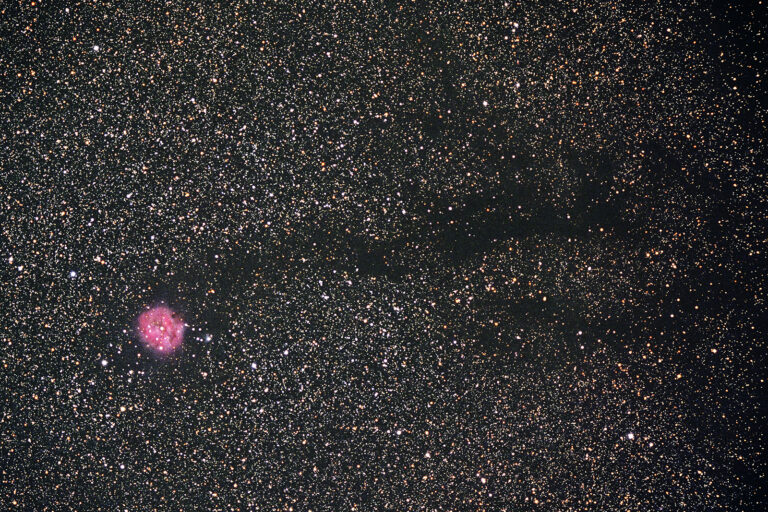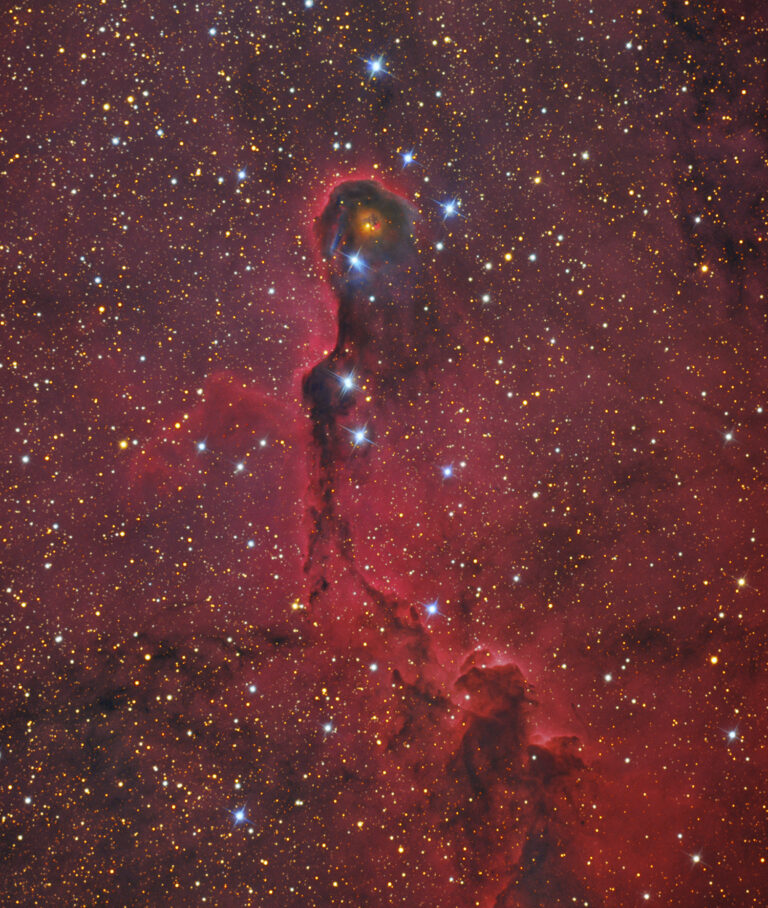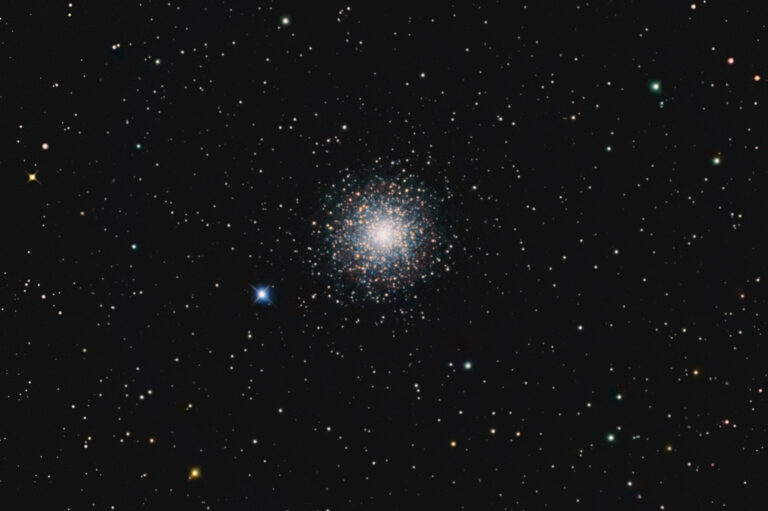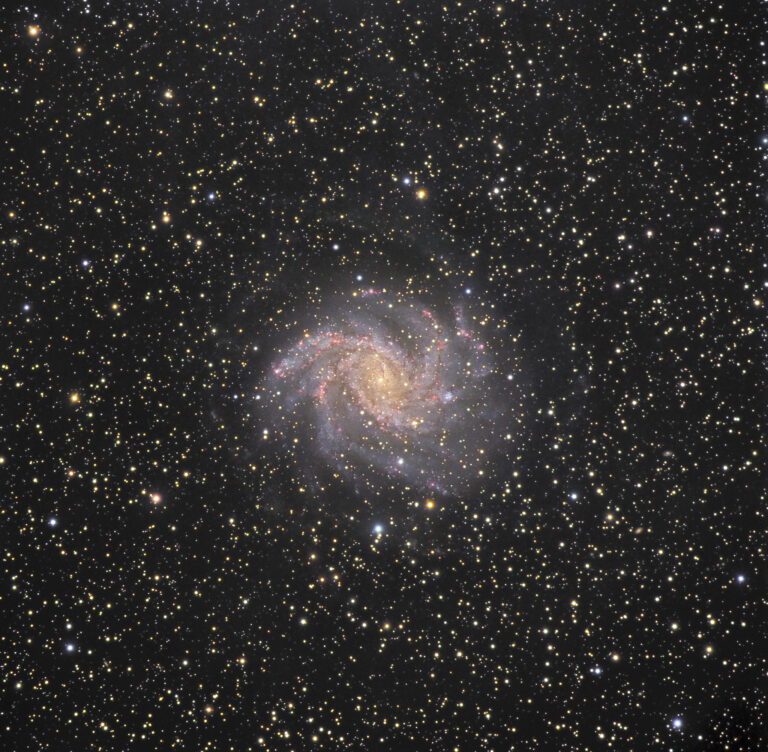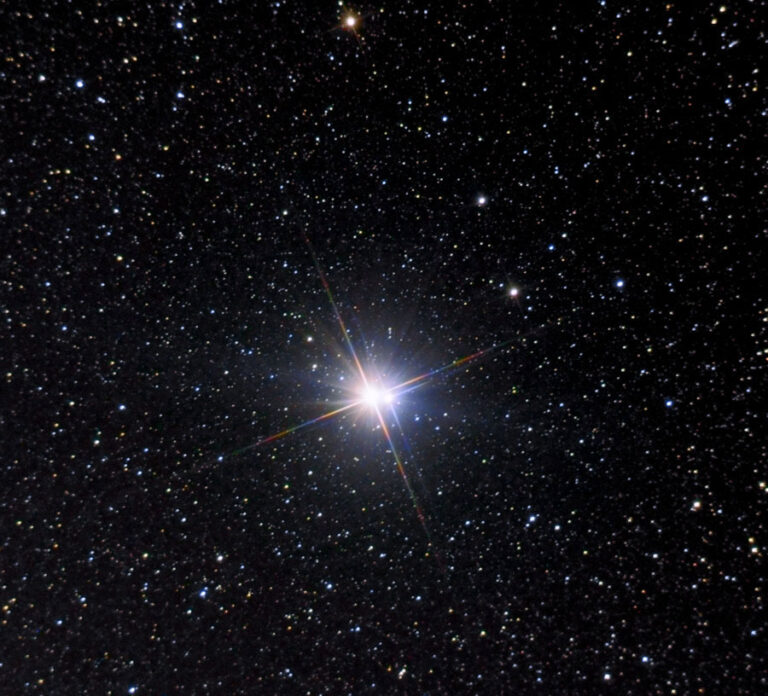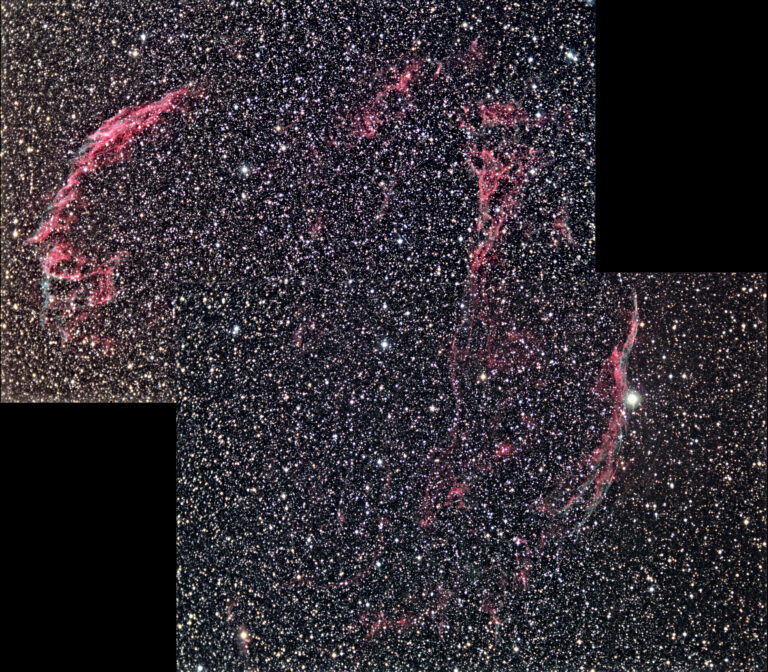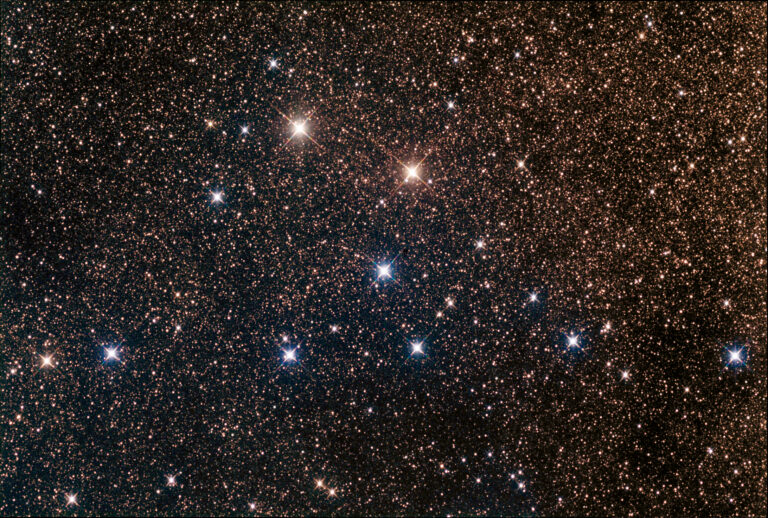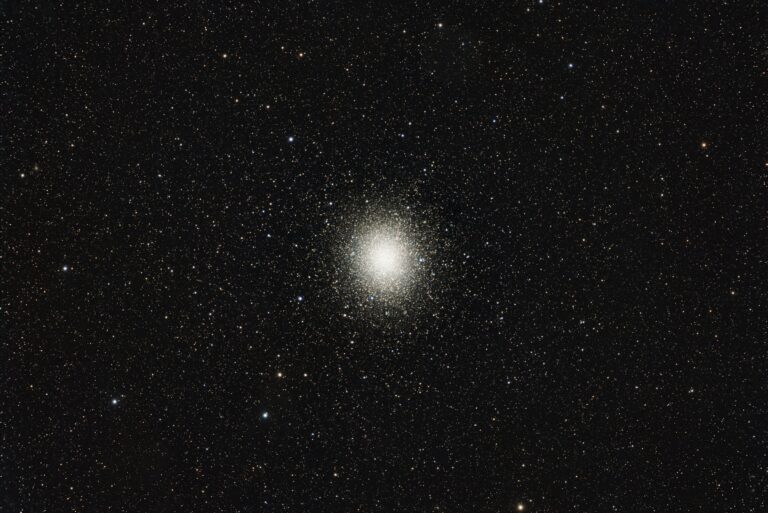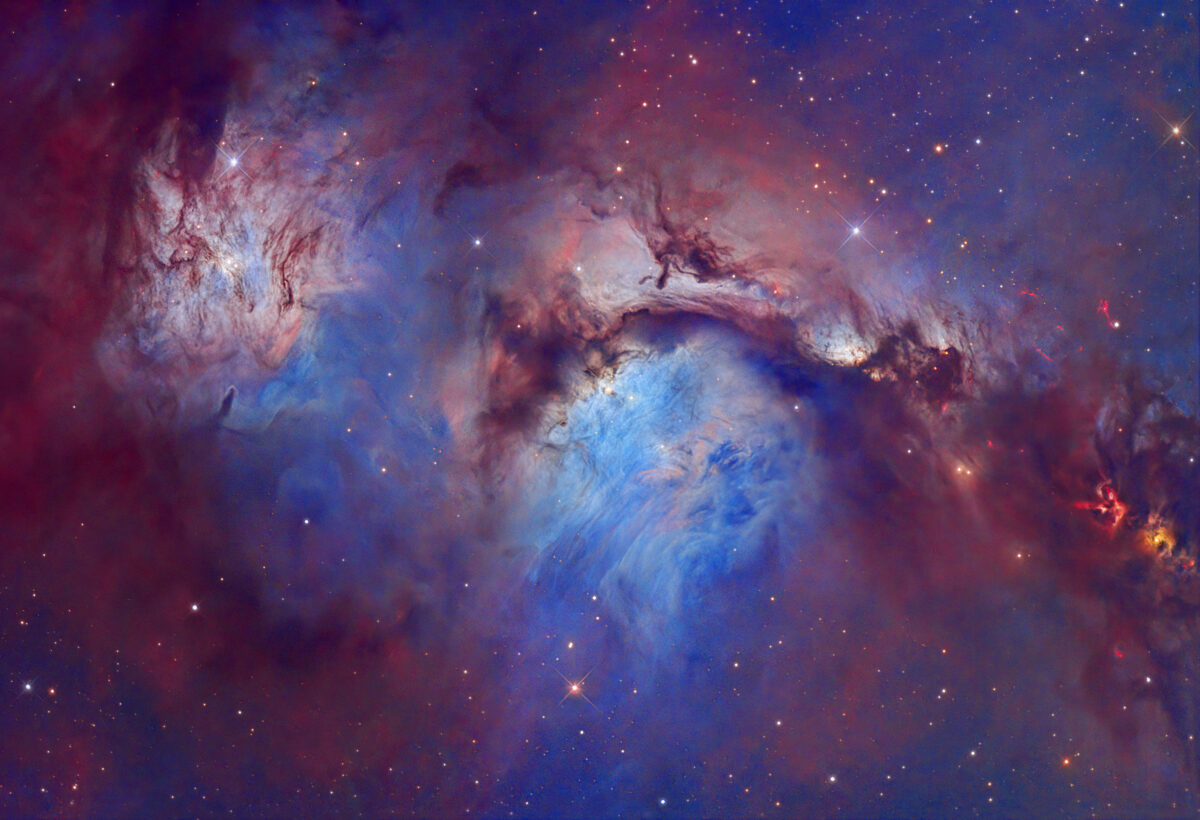
Key Takeaways:
- The article details various types of deep-sky objects observable by amateur astronomers, including double stars, variable stars, open and globular star clusters, emission, planetary, and reflection nebulae, supernova remnants, dark nebulae, and galaxies.
- It describes the characteristics and formation mechanisms of these objects, referencing specific examples such as the Orion Nebula, Andromeda Galaxy, and various Messier objects.
- The author highlights the advancements in telescope technology and information accessibility that have significantly broadened the range of observable deep-sky objects in recent decades.
- The text emphasizes the historical significance of certain deep-sky objects and observations, for example, Hubble's discovery of a Cepheid variable in Andromeda, leading to the understanding of the universe's vast scale.
Do you remember the first time you truly discovered the universe? When I was a teenager, many moons ago, I bought my first telescope, a Celestron 8. I remember excitedly unboxing it the day it arrived. Fortunately, I had a clear sky that evening and stayed up all night observing. In the early morning, I swung the scope over to the vicinity of the constellation Cygnus. Boom. There it was, plain as day: the Veil Nebula, its faintly glowing gray-green arcs of nebulosity running through a rich, speckled, multicolored star field, appearing like luminous fragments of twisted rope. I was absolutely stunned.
What really surprised me is that I had read that the Veil Nebula was not supposed to be visible in a such a small telescope. That night it struck me that much of the information about sky objects was wrong, or naïve, or based on observations under poor conditions. As a result, I created a small publication called Deep Sky Monthly, pushing ahead in step with a growing generational awareness of the universe. The publication coincided with the so-called Dobsonian Revolution, in which larger telescopes were rapidly becoming available to backyard astronomers.
At the same time, an information revolution was opening up new possibilities for telescopic targets. Rather than the limited few hundred objects most people thought were observable, the 1980s and 1990s saw an explosion of observers going after thousands of objects that were previously pretty much unknown. And now, a generation later, the world of deep-sky objects has never been better. Telescopes and imaging systems have improved dramatically over the last few years, and the knowledge of deep-sky objects has correspondingly sharpened.
What follows is a guide to the basic types of objects you can go after as an observer or imager targeting the distant cosmos. (Deep-sky simply means “beyond the solar system.” Objects within the solar system, such as the Moon and planets, will have to step aside for this article.) So buckle up and get ready for an overview of the many creatures that inhabit the Milky Way Galaxy, and distant shores of the cosmic ocean far beyond our own galaxy’s disk.
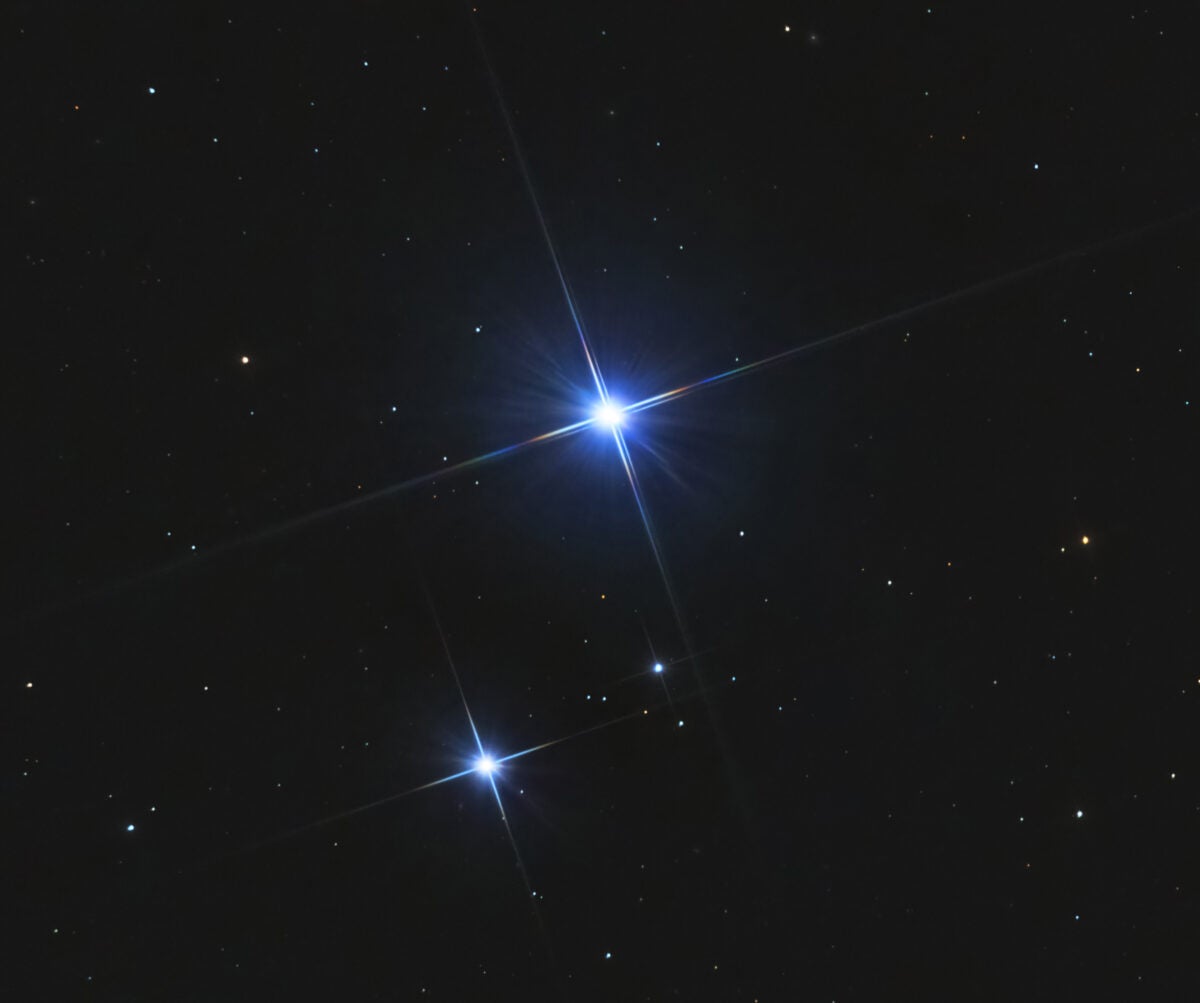
Double stars
Some of the most cherished memories I have of astronomical observing stem from my earliest teenage days. Those nights before I was familiar with the sky — when I simply went after everything, not knowing whether I could see an object or what it would look like — represented pure exploration and adventure. Everything was a surprise. In my first year of observing, before the Celestron 8, I simply had a pair of 7×50 binoculars. Scanning the sky here and there revealed countless interesting and unusual star fields. The luminous band of the Milky Way washed in and out of the field of view. And everywhere I looked, sparkling stars formed patterns. Many of them appeared to be double or multiple stars, the simplest category of deep-sky objects.
The magnificent nuclear furnace that powers our solar system and enables life on Earth — the Sun — is an exception as a solitary star. More than half of the stars in the Milky Way Galaxy and almost certainly in the universe at large are double or multiple star systems.
The term double star simply means two stars that appear close to each other as we see them. While some doubles are optical double stars — chance alignments that are not physically close or gravitationally bound — the majority are binaries and are physically associated systems, where the stars are orbiting each other. Additionally, some star systems are multiples and contain three stars or more orbiting each other in sometimes chaotic but generally stable ways. In the Milky Way, some 60 percent of the stars have one or more companions.
Great examples of double stars are scattered all over the sky. The middle star in the handle of the Big Dipper, Mizar, forms a nice double with Alcor. Another excellent example is the “base” star in the Northern Cross asterism of Cygnus: Albireo, a beautiful golden yellow star paired with a dimmer blue star. Many other bright and well-known stars are doubles: Acrux, Capella, Polaris, Procyon, Sirius, and more.
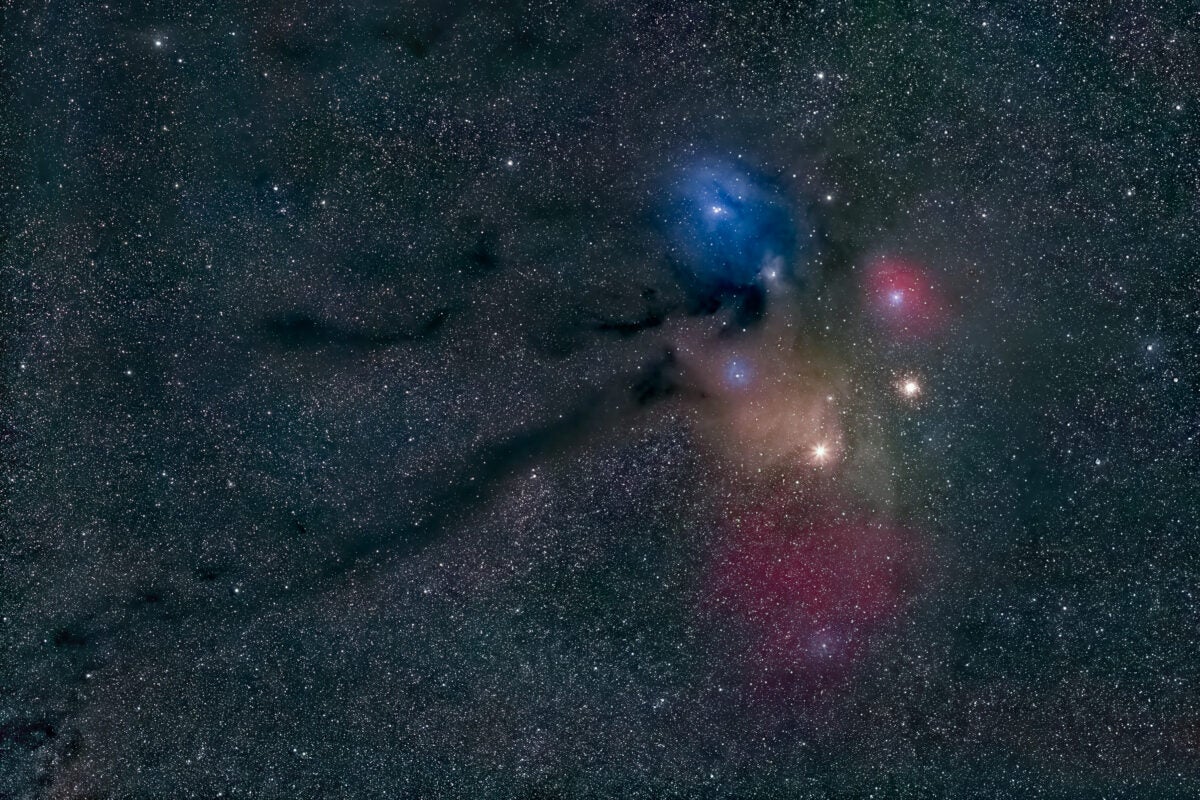
Variable stars
Over time, carefully viewing double and multiple star systems and plotting their positions can show their movements as the stars slowly orbit each other. Change is a relative rarity in the deep sky, as most objects are so distant and cosmic timescales so long. But the class of deep-sky objects called variable stars offers the opportunity to see changes in stellar behavior over shorter timescales.
The term variable hints at their nature: stars that vary in apparent brightness over time. The earliest known written record of a variable star is in a 3,200-year-old ancient Egyptian calendar documenting the regular changes in brightness of Algol in Perseus; other early known variables include Betelgeuse and Antares. Variable stars change their light output for a variety of reasons. Some are intrinsic variables, with brightness swings caused by changes in a star’s internal properties. These include pulsating variables, eruptive variables, and cataclysmic variables that undergo enormous changes like novae and supernovae.
A second major classification of variable stars is extrinsic variables, star systems that vary in brightness due to external properties. These include eclipsing binaries, star systems with members that occasionally eclipse their partner suns, and rotating variables, stars whose light output is affected by rotational characteristics. Some stars, for example, have enormous starspots that when aimed toward us, diminish the star’s brightness.
Within these broad categories, many subtypes exist. Some have been incredibly important in the history of astrophysics. Cepheid variable stars, for example, are named for the well-known prototype Delta (δ) Cephei. They vary in highly precise ways, such that their absolute brightnesses can be determined very well. So when Edwin Hubble discovered a Cepheid variable in 1923, in what was then called the Andromeda Nebula, the incredibly dim magnitude of the star could be used to calculate its great distance. This revealed that Andromeda was a galaxy separate from the Milky Way, not a nebula within it — a breakthrough that unlocked the nature of galaxies in a first step toward understanding the vast cosmic distance scale.
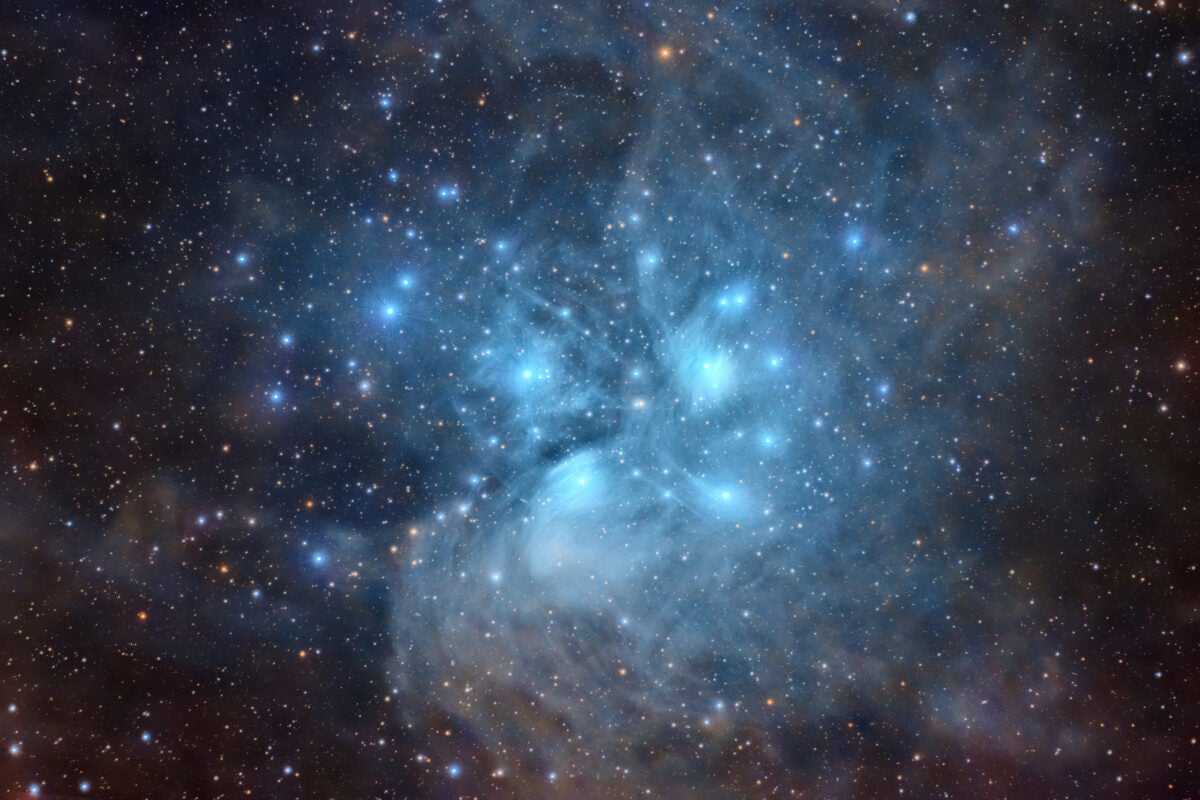
Open star clusters
One major aspect of the universe is that it operates like a giant, well-crafted recycling program. Hydrogen, helium, and other light elements are converted into heavier elements in the bellies of stars. When the stars die, they spit these elements back out into the interstellar medium to form nebulae, which eventually collapse through gravity and become stars once again. These clouds tend to produce groups of stars, which we call open star clusters. (Our Sun was born as part of such a group.)
Open clusters abound in our sky, so you’re undoubtedly familiar with a few. Those close to us in the galaxy include the Hyades, the V-shaped cluster that makes up the brightest part of the constellation Taurus. It lies 153 light-years away. Another smaller bright cluster, the Pleiades (M45), lies 444 light-years away. Altogether, the Milky Way contains some 1,100 open clusters, each containing dozens to several hundred stars.
The Ursa Major Moving Group is not an open cluster, but it’s the closest physically associated group of stars at only 80 light-years away. The group’s nucleus contains 14 stars that formed together several hundreds of million years ago. These stars include most of the stars in the familiar Big Dipper asterism.
So, if stars are born in open clusters and are surrounded by their dozens or hundreds of siblings, why is it that our Sun is a solitary star? Stars may be born in large groups, but the gravity between them is not strong enough to keep them together forever. As open clusters orbit the Milky Way’s center, tidal forces tear the stars from each other and scatter them into individuals or smaller associations. Thus, our Sun’s siblings have long since departed for other areas of the galaxy.
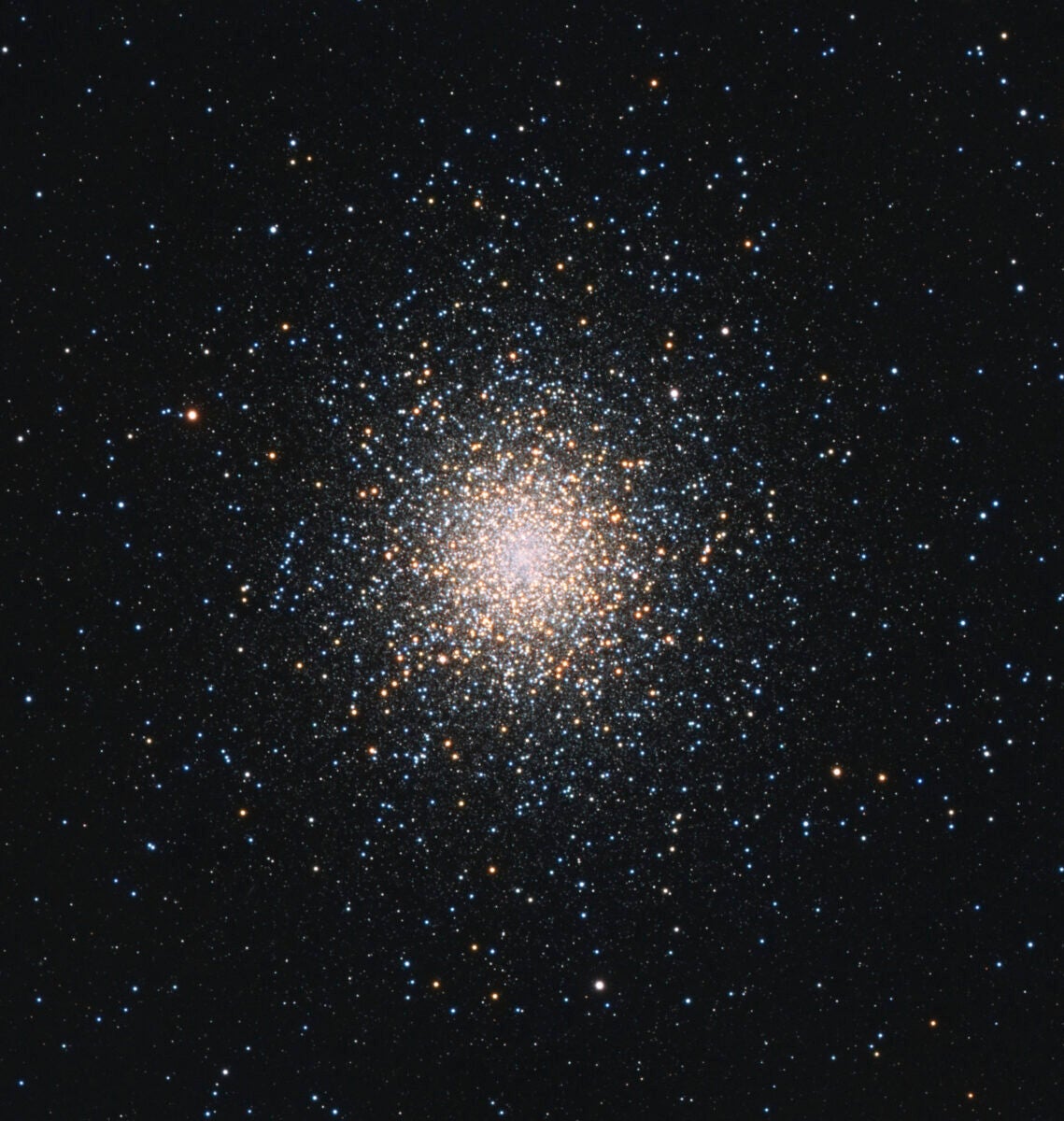
Globular star clusters
While open star clusters exist in the Milky Way’s disk and contain relatively young stars, another type of cluster plays the opposite role. Globular star clusters, named after their globelike shapes, lie scattered far out in the galaxy’s halo, away from the younger disk. They contain hundreds of thousands — sometimes as many as a million — stars, predominately old and yellowish. Astronomers believe that globulars formed in the early days of galaxy formation from material that did not fall into the rotating disks of their parent systems.
Although globular clusters lie at far larger distances than open clusters, many examples are bright and large enough to see nicely in amateur telescopes. They include M13 in Hercules and M22 in Sagittarius, as well as Omega Centauri and the great 47 Tucanae in the southern sky. Altogether, we know of about 160 globulars in the Milky Way, and it appears that nearly all galaxies have populations of globular clusters.
Some of the largest galaxies known are the giant elliptical galaxies that have grown as galaxies merge. These behemoths can contain as many as 15,000 globular clusters. One outstanding example is M87 — the most massive galaxy in the Virgo Cluster.
The largest globular clusters have an even more interesting tale to tell. Astronomers have concluded that these may be the remnant cores of disrupted dwarf galaxies whose material was partially dispersed, sending the core into a new life as a rich grouping of tightly packed stars. Omega Centauri is one such cluster; it contains 10 million suns and stretches over a diameter of at least 150 light-years, making it the most formidable globular cluster belonging to the Milky Way.
Emission nebulae
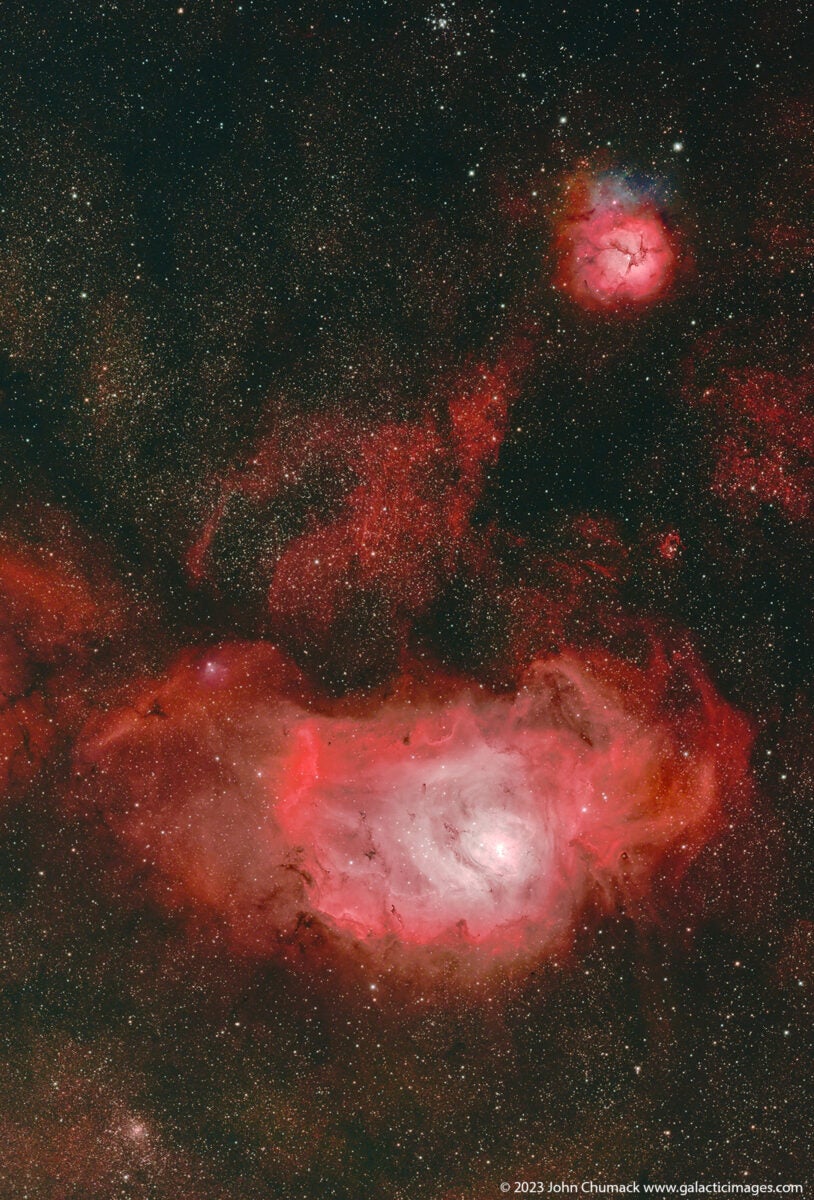
Our Milky Way and other galaxies do not contain stars alone. They are vast storehouses of gas. Under the right conditions, we see this gas as either glowing — excited by stars and fluorescing like an incandescent bulb — or simply reflecting light from bright stars toward us. These reflection and emission nebulae, along with other types of nebulae, make up some of the most interesting and varied objects in our local part of the universe to observe with a telescope.
The primary type of nebula in our sky is emission nebulae. These glowing clouds of mostly hydrogen gas are the stellar nurseries of our Milky Way Galaxy. We can see magnificent examples with small telescopes from a dark-sky site.
Some emission nebulae are so bright and so large that they can be seen with the naked eye. In the Northern Hemisphere, the most celebrated example is the Orion Nebula, visible as a fuzzy “star” in the center of Orion’s Sword. This glowing gas cloud lies about 1,500 light-years away, spans nearly 25 light-years, and is slowly churning out a cluster of infant stars. In the Southern Hemisphere is the spectacular Carina Nebula, the brightest and largest nebula in Earth’s sky. This beast glows with the brightness of a 1st-magnitude star and covers some 300 light-years of space — impressively bright from a distance of 7,500 light-years.
A raft of bright and interesting emission nebulae exists in the general direction of the galactic center. Here you will find stunning examples such as the Lagoon and Trifid nebulae, the Omega Nebula, the Eagle Nebula, and many more.
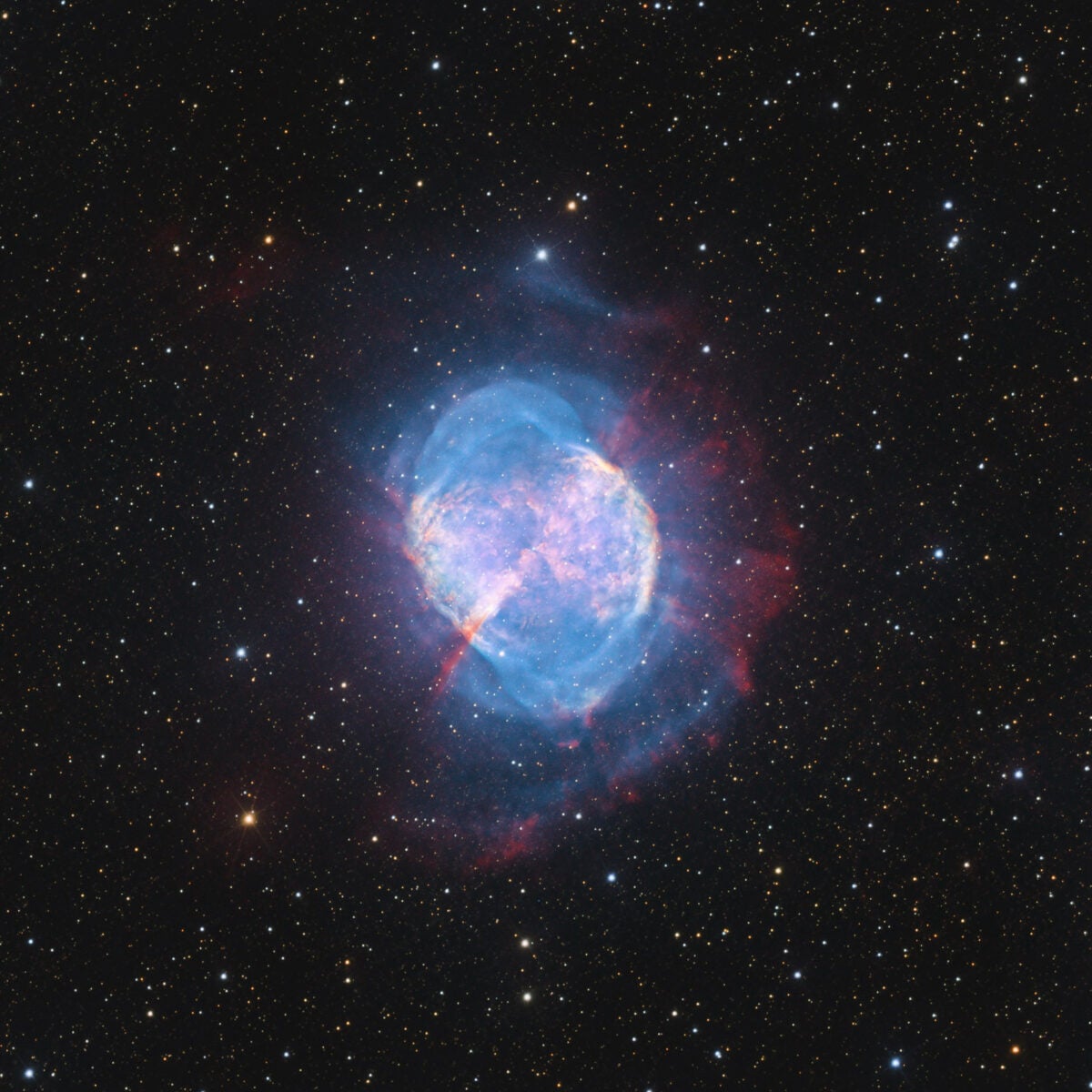
Planetary nebulae
Also glowing by fluorescence but at the other end of the stellar life cycle are planetary nebulae. William Herschel is believed to have originated the term in the 1780s based on these objects’ resemblance to planetary disks in the telescope. They have no connection to planets, however: Instead, they are the result of stars with about the same mass as the Sun approaching the ends of their lives.
As stars go about their existence, they convert hydrogen and other light elements into heavier elements by nuclear fusion. At some point, these stars transform as the supply of hydrogen is exhausted. Just by looking at the 3,500 known planetary nebulae in our galaxy, we can foresee the future of our solar system. In about 6 billion years, the Sun will start to exhaust the hydrogen fuel at its core, swell into a red giant, and begin to fuse helium. This will lead to instability and eventually force the Sun to puff off a shroud of gas that will constitute a planetary nebula. The first puffs will be relatively slow, followed by higher-velocity outbursts. The interaction between the gas and intense ionizing radiation from the star will cause the shroud to glow for something like 20,000 years.
Life on Earth will have been long gone before our Sun’s planetary nebula stage arrives. But we can look through our telescope eyepieces to observe many examples of bright planetaries in our sky — some circular and others more elongated, like a squashed bug. A popular example is the Ring Nebula in Lyra, with its famous central dark hole and faint central star, dimly glowing away. Another is the Dumbbell Nebula in Vulpecula, appearing, as its nickname suggests, with a tapered center and rounded ends. Many others are scattered along the Milky Way, giving us a glimpse of our cosmic neighborhood’s distant future.
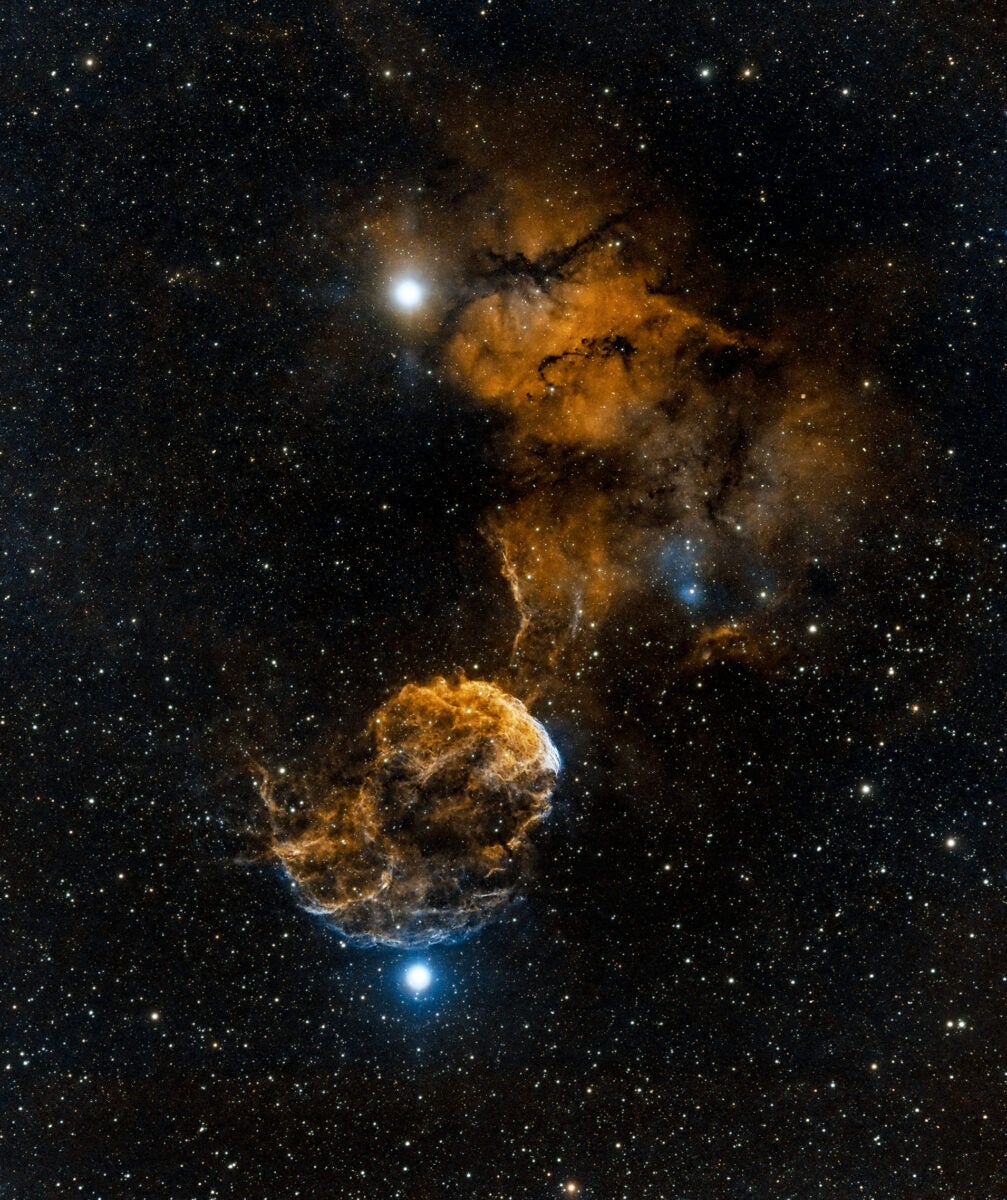
Supernova remnants
Stars evolve and expire in an array of different ways. The least massive stars churn away with fusion for vastly long intervals; they may be the final, dimly glowing remnants in the cosmos’ distant future. Sun-like stars end as planetary nebulae and white dwarf remnants, as we’ve seen. More massive stars, however, with about eight times the mass of the Sun or more, have shorter lifespans and more violent ends.
The end result of a massive star’s life is a cataclysmic explosion producing a supernova, which can briefly unleash so much energy that it outshines its entire host galaxy as it collapses to either a neutron star or a black hole. The byproduct of a supernova explosion is a supernova remnant — a glowing cloud of gas — and these nebulae can be observed for periods of hundreds of thousands of years before they dissipate into the interstellar medium.
You may well know of some celebrated examples of supernova remnants in our sky. The very first object in Charles Messier’s famous list of deep-sky objects, M1, is the Crab Nebula — a supernova remnant. The bright exploding star was observed in various early cultural records in 1054, and we now see the slowly expanding remnant as a nebula. Other great examples also lie around the sky, including the Veil Nebula, the Vela Supernova Remnant, IC 443, and the small remnant cloud produced by the closest recent supernova, SN 1987A, in the Large Magellanic Cloud.
Reflection nebulae
While emission nebulae, planetary nebulae, and supernova remnants all glow via excited atoms, not all nebulae are luminous. Reflection nebulae are clouds of interstellar dust that are visible from Earth because the geometry works in such a way that they reflect starlight toward us. They’re illuminated either by stars embedded within them or bright stars lying nearby.
The dust that comprises these nebulae contains minute particles of carbon, nickel, iron, and other elements. The presence of metallic elements (like iron and nickel) results in some reflection nebulae being aligned with the galactic magnetic field. (This can happen with planetary nebulae as well.) Because they are not glowing, most reflection nebulae are faint. Good examples exist, however, such as M78 in Orion, the Witch Head Nebula in Eridanus, and the Merope Nebula surrounding the brightest stars in the Pleiades.
Many nebulae consist of combinations of emission and reflection nebulae. The most famous example with both types side by side is the Trifid Nebula, with its pinkish emission and bluish reflection “halves.”
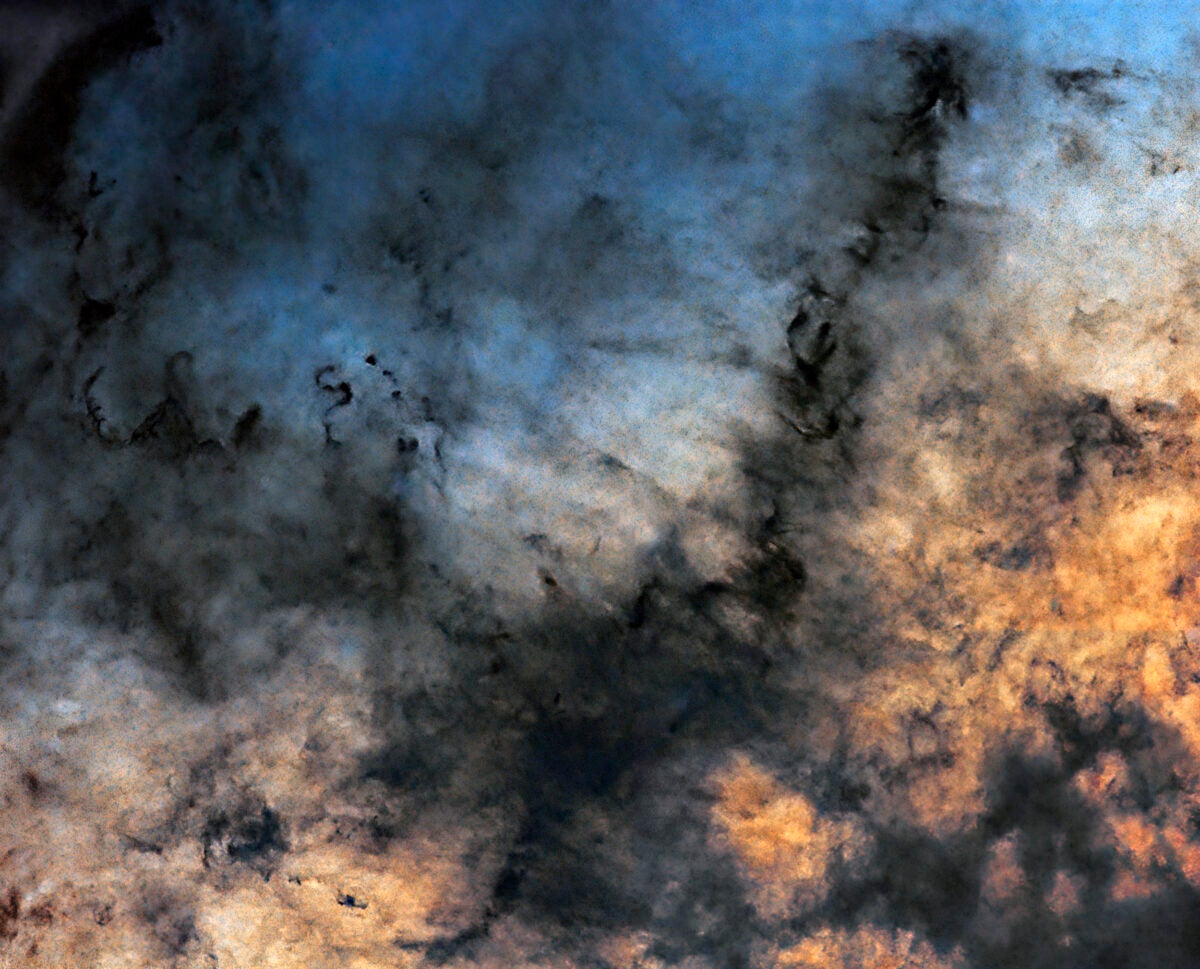
Dark nebulae
A final broad category of galactic clouds is dark nebulae. These dense interstellar molecular clouds block starlight from beyond and therefore are seen as “negative spaces” in the fabric of the galaxy. The astronomer Edward E. Barnard recorded several hundred such objects in his famous catalog called “Barnard’s Catalogue of 349 Dark Objects in the Sky,” published in 1927. The particles that make up dark nebulae are coated in carbon and quite small, perhaps about the size of those in smoke. A great density of these particles needs to be present to block the light of stars lying behind them.
Observing dark nebulae can be a challenge, because to see them well requires a really dark sky. Under good conditions, though, huge dark nebulae can be seen running along and through the luminous band of the Milky Way from a dark sky site. Other notable smaller dark nebulae include the celebrated Horsehead Nebula in Orion, the Coalsack in the southern constellation Crux, the Pipe Nebula in Ophiuchus, Barnard’s E (B142 and B143) in Aquila, and many more.
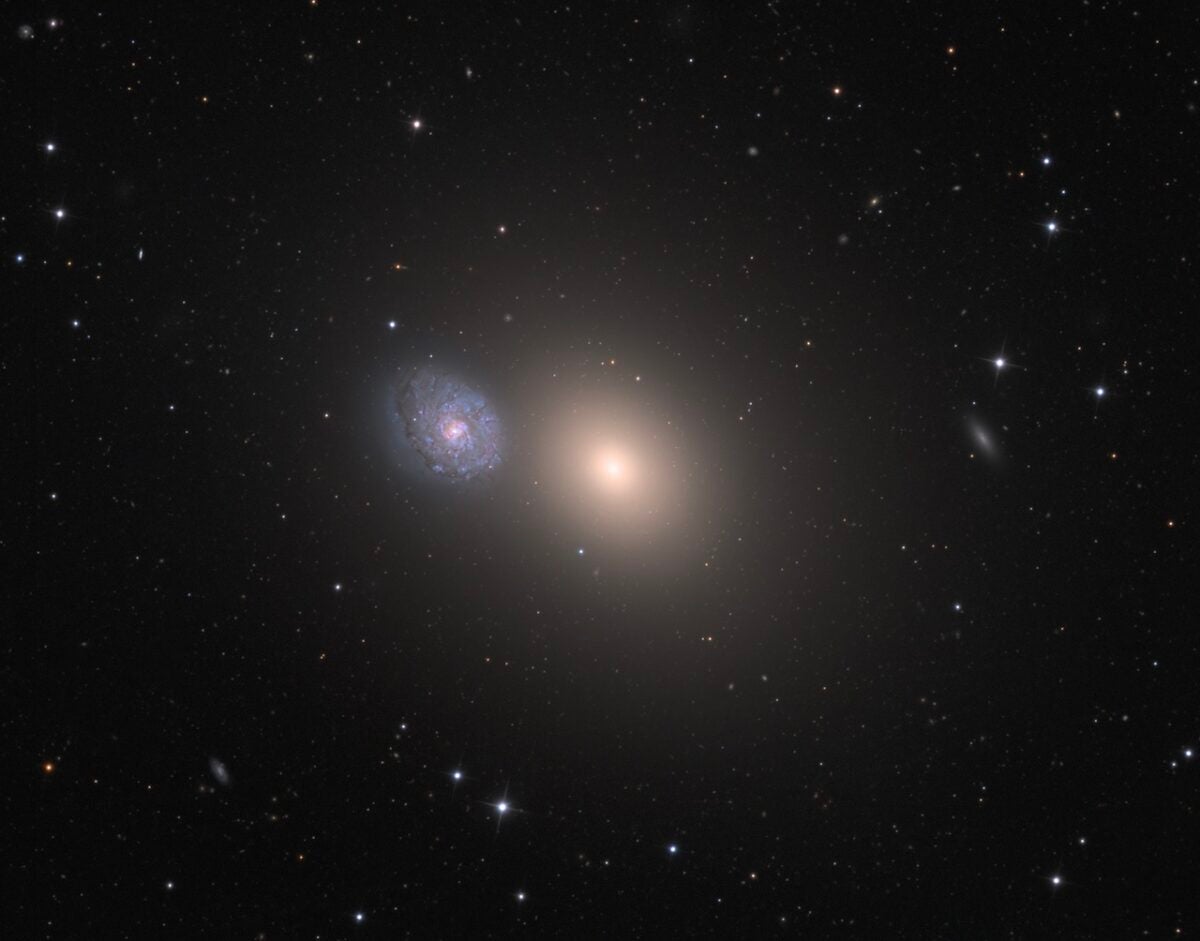
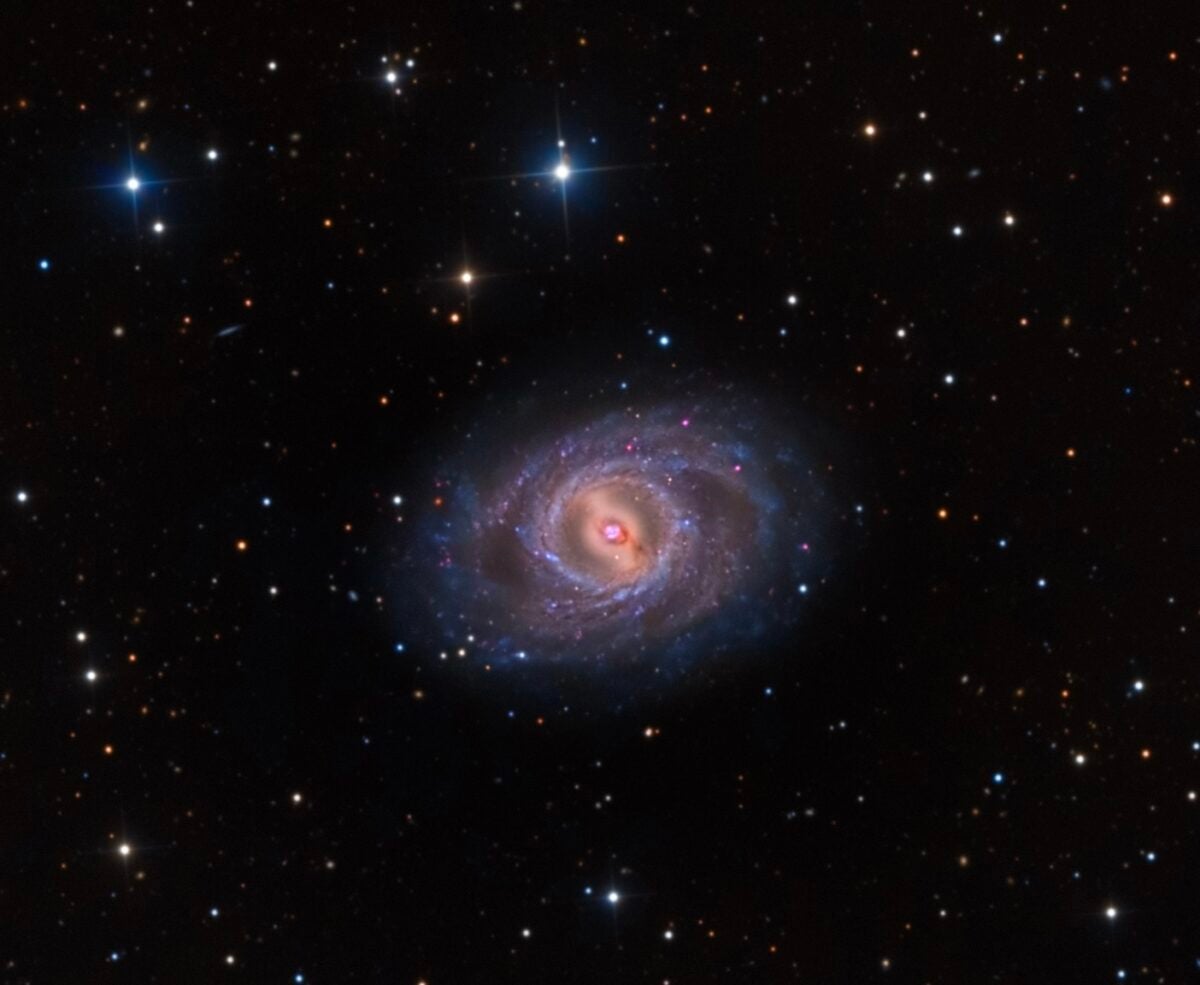
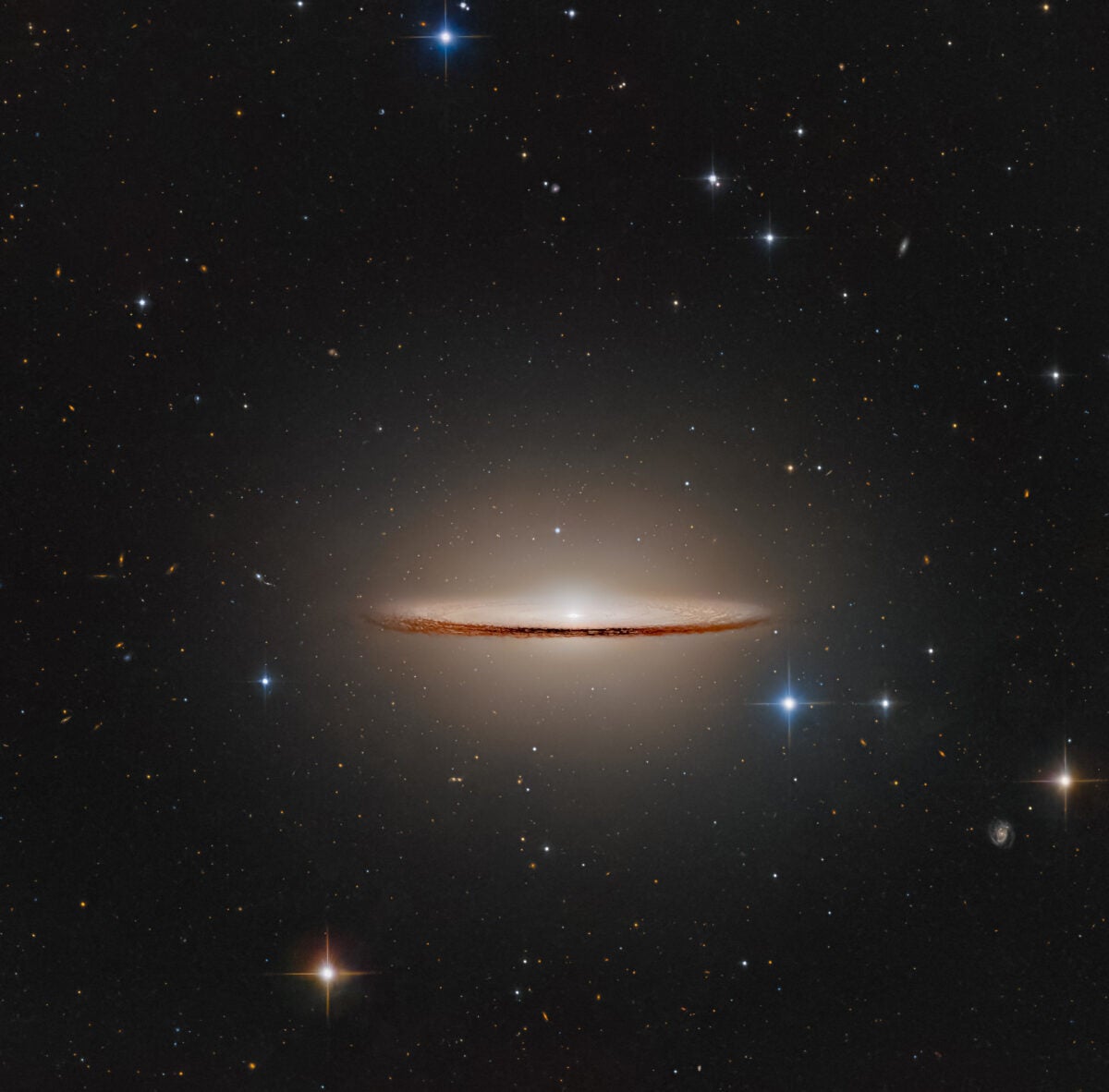
Galaxies
In late 1923, Edwin Hubble made his breakthrough discovery of the nature of the Andromeda Galaxy. In the decades since, astronomers have not only discovered that the Milky Way and Andromeda are two big galaxies in our Local Group, but that the universe contains at least on the order of 100 billion galaxies, and that they display a few basic types of morphology.
Three sizable galaxies exist in our own Local Group: the two just mentioned and M33. But just like stars, the most numerous galaxies are dwarfs. At least 80 such members reside in the Local Group, and possibly more — nearly all of them dwarfs. Setting dwarfs aside, however, normal galaxies constitute several types. The first is the spiral galaxy, which consists of a flattened bright disk of stars, gas, and dust, with a dark matter halo and a cloud of globular clusters surrounding it. Countless galaxies familiar to readers and observers are spirals, including Andromeda, M33, the Whirlpool Galaxy, M81, M101, and many more.
For decades astronomers believed the Milky Way was a “normal” spiral galaxy. However, in the last 20 years, astronomers have mapped the existence of a prominent bar in our galaxy, placing it into the second major type, barred spirals. A barred spiral galaxy has a bright disk, but its distinguishing feature is a prominent, elongated bar of material passing through the nucleus, anchoring spiral arms at each end. Barred spirals are common. Aside from our galaxy, examples include M95, M109, and the Large Magellanic Cloud — one of the Milky Way’s satellite dwarf galaxies.
The third major type of galaxy is the elliptical. Rather than a flat disk of stars, ellipticals are spherical balls of stars with very little gas and dust. Because of their shape, they can contain a vastly larger amount of matter than a flattened disk with the same diameter. For years astronomers struggled with ideas of how elliptical galaxies form. Today, the consensus is that they are created from the mergers of disk galaxies. We now know that the Milky Way and Andromeda are moving toward each other and will eventually merge, turning into a single, massive elliptical something like the well-known galaxy Centaurus A in the Southern Hemisphere. Countless examples of ellipticals litter the sky, and include M49, M60, and M87.
The realm of the deep sky has completely transformed over the past generation. Thirty years ago, the great majority of enthusiasts were targeting the same couple hundred objects, starting with the Orion Nebula and Andromeda Galaxy. Now, the information explosion has redirected people to vastly more distant places. Armed with smart scopes, better info, and curiosity, we can go after strange nebulae, vistas of star formation, strange galaxy clusters, and binary star systems that house hidden black holes. The sky is truly now the limit.

